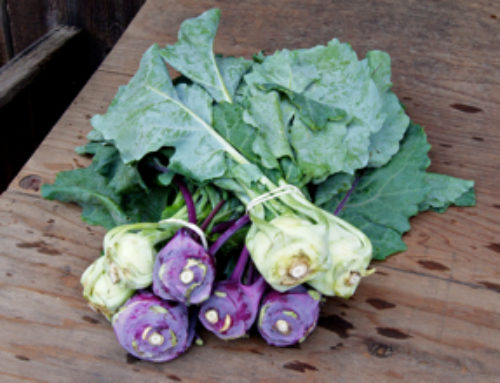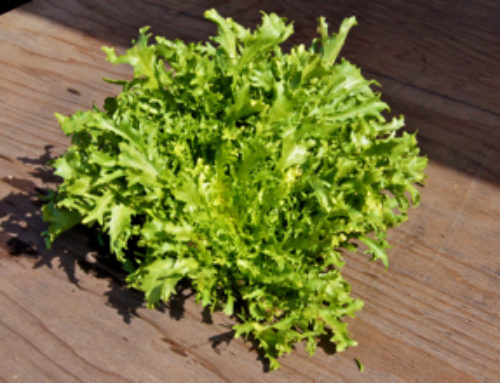CSA member Anna W. writes, “What are those ‘bugs’ that I find in vegetables like broccoli and now the Brussels sprouts? Are they aphids? Are they edible? The thought just grosses me out so I end up throwing away a lot of healthful vegetables. Can I wash/rinse them off, and how?” Folks, Anna brings up a good question. This is a subject none of us like to deal with but which we have all inevitably encountered.
Yes, Anna, those’re definitely aphids. Tiny soft-bodied grey fuzzy trouble-makers. Sesame-seed-sized Tribbles. You “can” eat them, as in they’re not harmful (technically I suppose they’d be protein), so it won’t hurt if you ingest a few — but they don’t taste good. (And don’t ask me how I know this; you probably, ahem, already know the answer!) A solution from bygone days was to introduce lots of ground black pepper to the dish you were making — the pepper flavor hid the aphid taste, and the little black flecks of pepper hid the… well, you get the idea. I’ve never consciously done this myself, but it’s a bit of lore that could come in handy if you were stuck between a rock and a hard place (i.e. between hunger and no other options). But don’t despair; there are other ways to deal with them!
In our CSA shares we most often encounter them in the brassicas — broccoli, Brussels sprouts, cabbage, kale. With leafy things like kale, they’re easy enough to spot and wash/rub off; they are a bit clingy though, so a simple rinse doesn’t always cut it. Sometimes you have to get your fingers down in there and rub while rinsing, to dislodge them. Cleaning them out of Broccoli and Brussels sprouts is another story entirely though, as both have lots of little interstices for hiding in.
First, broccoli. About a year ago I wrote a comprehensive treatment (with good pictures) for dealing with aphids in broccoli so definitely go there if you specifically want to address aphids in broccoli. This is by far the best technique I’ve come up with. Rinsing does not work; not even rinsing with hot water.
On to Brussels sprouts. Here, eradicating aphids is a wee bit easier than with broccoli as a) you have to prep each individual sprout before you cook them anyway, b) the buggers are easier to spot, and c) the techniques for removing them are essentially a slightly more aggressive version of the prep you’re already doing.
So: that provides a nice segue into simply showing you how to prep Brussels sprouts!
Prepping Brussels sprouts takes some patience, because there’s no getting around having to deal with them one at a time. It’s all well worth the trouble though, because boy are they good! Think of it as a zen exercise; makes it very contemplative, calming.
Generally speaking (and especially if aphids are not evident), you don’t have to wash Brussels sprouts because you are already “cleaning” them by trimming off the bottom and then peeling away a few outer leaves.
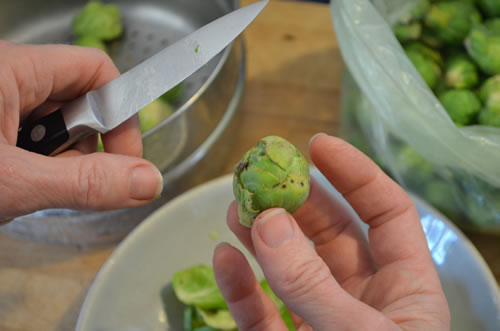
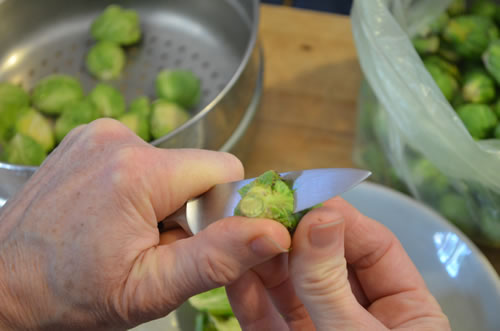
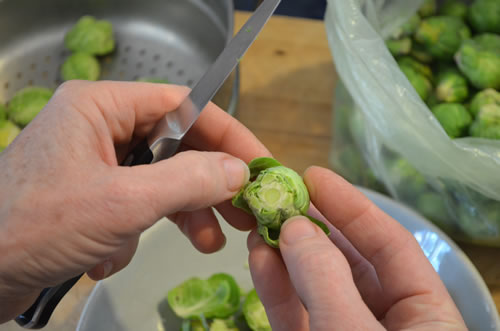

If aphids are present, simply trim off the areas where you see them, or remove more leaves until you’ve reached a layer where they are no longer present.
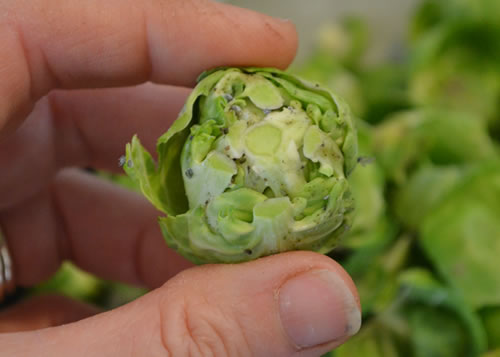
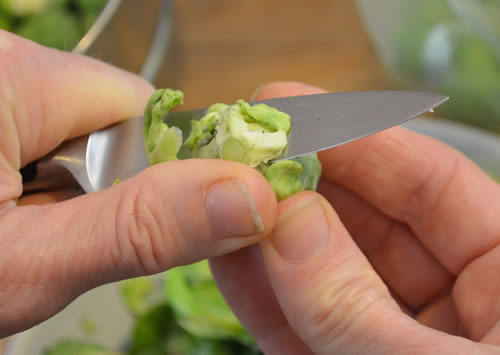

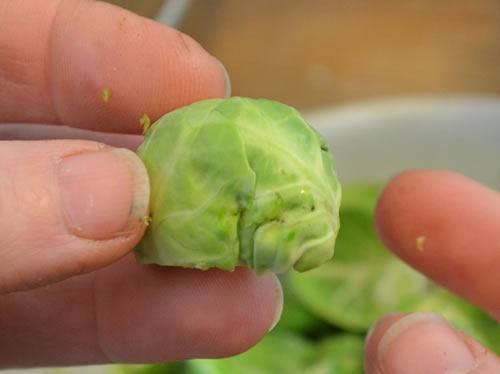
Or if after trimming and removing a few leaves there are still some aphids and it seems a waste to cut away more sprout to remove them, use a soft-bristle brush under a little running water to clean remaining aphids out of the crevices. I sometimes do this; I go back and forth. Cutting them in half is a reassuring step as well, as this makes it easy to confirm you got all the aphids.

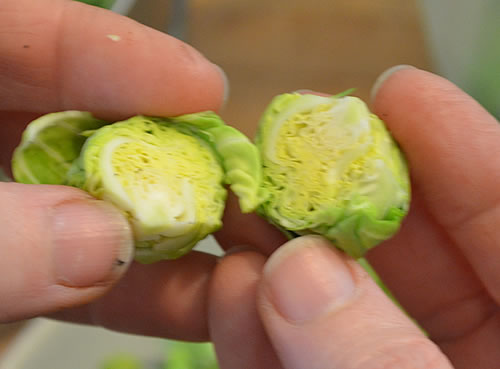
(Cutting in half is not a required prep step though; it’s just one I commonly make, as I like to pan brown them. They are also delicious oven-roasted whole, with a little olive oil, garlic, salt and pepper.)
Sometimes a sprout will just have too many aphids; if that’s the case, chalk it up as a loss and move on to the next sprout.
Pan-Browned Sprout Recipes
There are really many variations, and you should totally feel free to experiment, but the basic steps are: steam trimmed, halved sprouts for a scant two minutes, then brown in a heavy-bottomed skillet in some sort of fat (olive oil, butter, or a combination of both; bacon drippings; coconut oil; whatever you like to cook with), and season with salt. Beyond that, you can introduce herbs; you can introduce other veggies or alliums (onion, leek, garlic); mushrooms, eggs, bacon/ham/pancetta type things, cheeses… I’ve even added nuts and liqueur and flambeed them! (Stand back or you’ll singe your eyebrows!)
In the first example I browned them in a combo of butter and olive oil, then embellished by adding herbes de provence, salt and pepper, mushrooms and shelled pistachios. I like herbes de provence a lot with sprouts, but they would also be good with thyme, or sage.

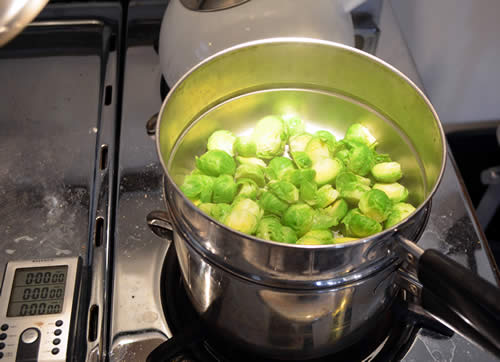
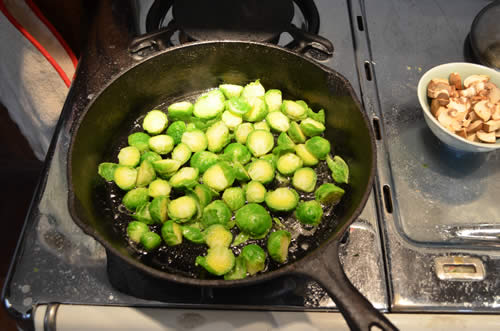
I try to turn them all cut-side down, so they get nice and browned on the flat sides.

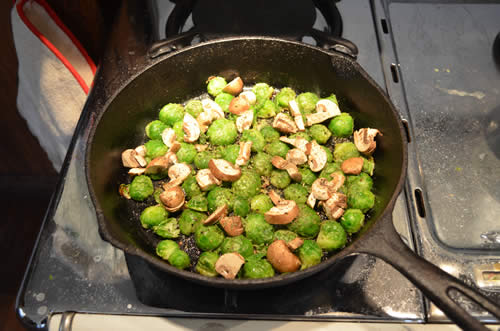
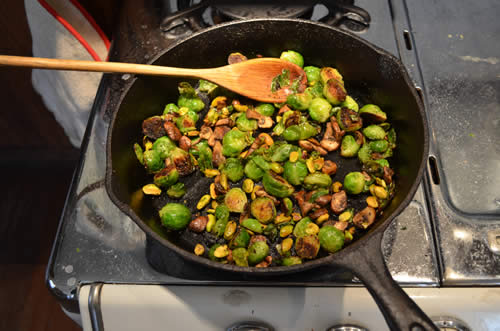
In the second example – a simple breakfast scramble – I used the same butter, oil and seasonings combo (herbes de provence, salt and pepper), but instead of the mushrooms and nuts I added beaten eggs and made a scramble, then served ’em up with a side of sourdough toast. A yummy addition to this combination, if you have it, is to crumble some feta cheese on top and let it melt for a minute or so before serving. But if you don’t have cheese (as I didn’t in this example), they are still perfectly yummy!
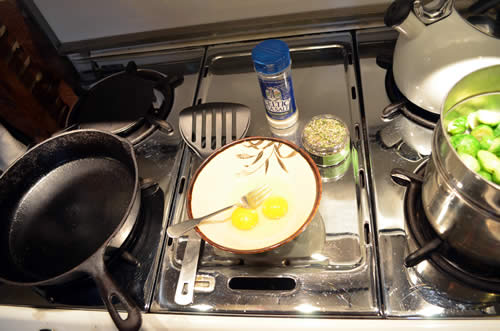
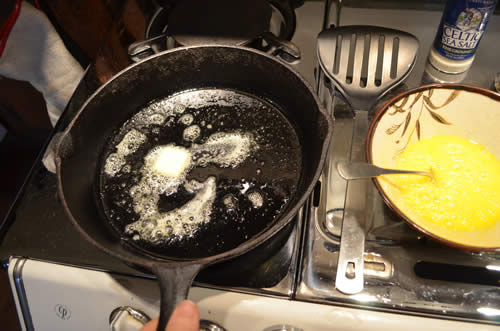
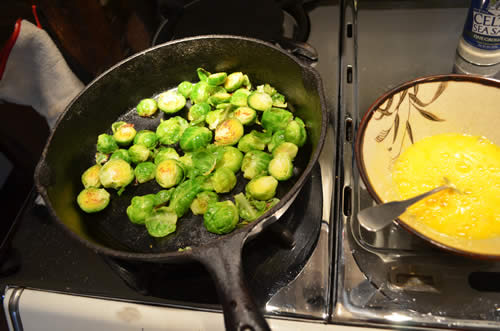
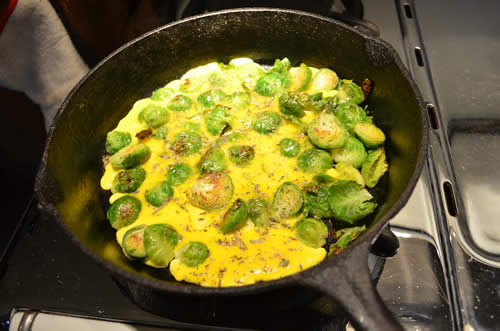
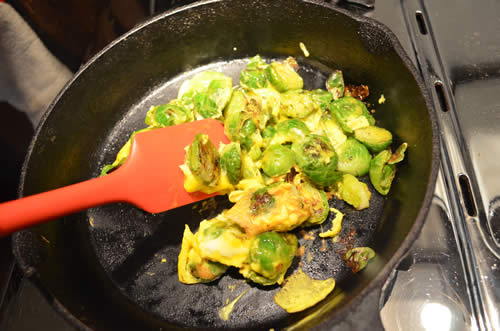
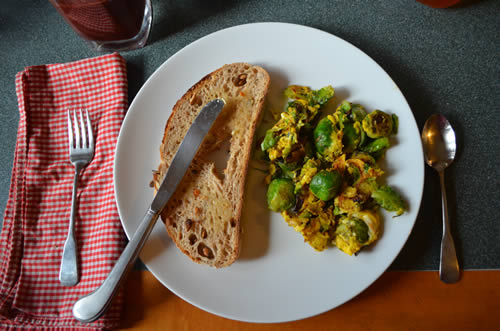
Bon appetit!

